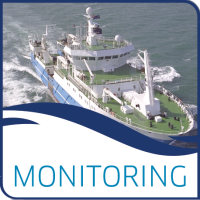The 2022 assessment of the UK's Clean Seas Environment Monitoring Programme described the status and trends of contaminant concentrations and biological effects measurements in biota and sediment at monitoring stations in waters around the UK. Assessments were made for a large number of time series, typically each of a single contaminant in a single species and tissue (biota) at a single monitoring station. The results of the individual time series at coastal and offshore stations were synthesised to assess status and trends at the biogeographic regional level. These form the basis for nine Descriptor 8 Indicators in the UK's 2025 Marine Strategy Assessment.
Data and Resources
- 2022 CSEMP contaminant and biological effect datacsv
The file biota_data.csv contains the contaminant and biological effect data...
Preview Download - 2022 CSEMP Biota regional datacsv
The file biota_regional_data.csv contains the summary measures used to make...
Preview Download - 2022 CSEMP Biota Regional Resultscsv
The file biota_regional_results.csv contains the results of the regional...
Preview Download - 2022 CSEMP Biota Resultscsv
The file biota_results.csv summarises the assessment results for each...
Preview Download - 2022 CSEMP Sediment datacsv
The file sediment_data.csv contains the contaminant data in sediment used in...
Preview Download - 2022 CSEMP Sediment regional datacsv
The file sediment_regional_data.csv contains the summary measures used to...
Preview Download - 2022 CSEMP Sediement regional resultscsv
The file sediment_regional_results.csv contains the results of the regional...
Preview Download - 2022 CSEMP Sediment resultscsv
The file sediment_results.csv summarises the assessment results for each...
Preview Download
| Field | Value |
|---|---|
| Publisher | |
| Modified | 2025-06-03 |
| Release Date | 2025-05-23 |
| Identifier | 83c03fdf-217f-47d6-9237-6b289dfda071 |
| Spatial / Geographical Coverage Area | POLYGON ((-11.337890625 49.184396320153, -11.337890625 61.25108369705, 2.63671875 61.25108369705, 2.63671875 49.184396320153)) |
| Temporal Coverage | 1999-01-01 to 2021-12-31 |
| Language | English (United Kingdom) |
| License | UK Open Government Licence (OGL) |
| Data Dictionary | Data are submitted to the MERMAN database by Competent Monitoring Authorities. A series of templates are populated by submitting officers and submitted to the database which has in-built data restrictions and a data filter to ensure high quality, accurate data are submitted. The data filter has formulae in-built which use Accredited Quality Control information from known standards, limits, standard deviations and/or inter laboratory calibration exercises to calculate a score. Only data that pass a threshold agreed with the national advisory bodies are used for assessments. The data for 1999 - 2021 were extracted from MERMAN on 11 January 2023. They were supplemented by micronucleated cell and fish disease index data provided directly by the Marine Directorate of the Scottish Government and the Centre for Environment, Fisheries and Aquaculture Science. Data checks were made and records with obvious errors were deleted or corrected. The concentration and biological effects data were standardised to agreed units and bases and, in the case of sediment, were normalised to 5% aluminium (metals) and 2.5% organic carbon (organics). The data were grouped into time series, typically of a single contaminant in a single species and tissue (biota) at a single monitoring station. Time series with no data in the period 2016 - 2021 were excluded. The data archived here are those for selected metals; polycyclic aromatic hydrocarbons (PAHs) and their metabolites; polychlorobiphenyls (PCBs), dioxins and other organochlorines; polybrominated diphenyl ethers (PBDEs) and other organobromines; organofluorines; tributyltin and its derivatives; imposex (VDS) and other biological effects measurements. The individual time series were assessed for status and trends. Status was assessed against environmental thresholds (biota and sediment) and human health thresholds (biota only). The results are archived here, with links to the underlying methodology included in the description of each resource. The results of the individual time series were synthesised to assess status and trends at the biogeographic regional level. Both the input summary measures of status and trends, and the resulting regional estimates of status and trends are archived here. There are regional assessments for metals, PAHs, PCBs and PBDEs in biota and sediment, and for PAH metabolites, imposex, ethoxyresorufin-O-deethylase (EROD), micronucleated cells and the fish disease index in biota. The results form the basis for the following Descriptor 8 Indicators in the UK's 2025 Marine Strategy Assessment: |
| Contact Name | Marine Directorate, Scottish Government |
| Contact Email | |
| Public Access Level | Public |


